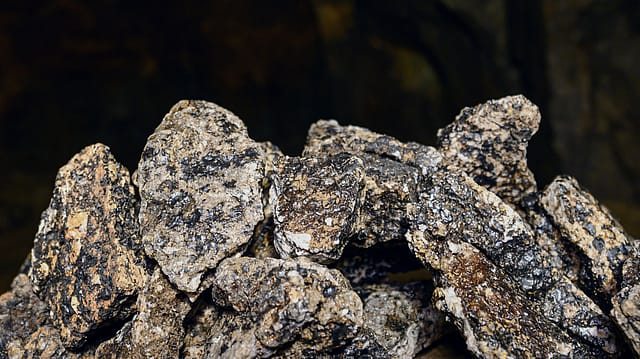Cabinet approves royalty rates for mining of 12 critical minerals
ADVERTISEMENT

The Union Cabinet on Thursday approved the amendment of the Second Schedule to the Mines and Minerals (Development and Regulation) Act, 1957 (MMDR Act) for specifying the rate of royalty in respect of 12 critical and strategic minerals such as Beryllium, Cadmium, Cobalt, Gallium, Indium, Rhenium, Selenium, Tantalum, Tellurium, Titanium, Tungsten and Vanadium.
The government has decided to specify a reasonable royalty rate of 2-4% on these minerals.
This completes the exercise of rationalisation of royalty rates for all 24 critical and strategic minerals. The government had notified the royalty rate of three critical minerals — Lithium, Niobium and Rare Earth Elements — in October last year.
Today's approval of the Union Cabinet for the specification of the rate of royalty will enable the central government to auction blocks for these 12 minerals for the first time in the country. Royalty rate on minerals is an important financial consideration for the bidders in auction of blocks. The manner for calculation of average sale price (ASP) of these minerals has also been prepared by the Ministry of Mines which will enable the determination of bid parameters, the Cabinet note says.
January 2026
Netflix, which has been in India for a decade, has successfully struck a balance between high-class premium content and pricing that attracts a range of customers. Find out how the U.S. streaming giant evolved in India, plus an exclusive interview with CEO Ted Sarandos. Also read about the Best Investments for 2026, and how rising growth and easing inflation will come in handy for finance minister Nirmala Sitharaman as she prepares Budget 2026.
In 2023, the Parliament amended mining rules, paving the way for private companies to mine lithium, cobalt and nickel – the three critical raw materials required to manufacture battery cells. The Second Schedule of the Mines and Minerals Development and Regulation (MMDR) Act provides royalty rates for various minerals. Item No. 55 of the Second Schedule provides that royalty rate for the minerals whose royalty rate is not specifically provided therein shall be 12% of the Average Sale Price (ASP). Thus, if the royalty rate for these is not specifically provided, then their default royalty rate would be 12% of ASP, which is considerably high as compared to other critical and strategic minerals. Also, this royalty rate of 12% is not comparable with other mineral-producing countries.
Critical minerals have become essential for economic development and national security in the country. Critical minerals such as Cadmium, Cobalt, Gallium, Indium, Sellenium and Vanadium are used in batteries, semiconductors, solar panels, etc. These minerals have gained significance in view of India's commitment towards energy transition and achieving net-zero emission by 2070. Minerals like Beryllium, Titanium, Tungsten, Tantalum, etc. have usage in new technologies, electronics and defence equipment.
Encouraging indigenous mining would lead to reduction in imports and setting up of related industries and infrastructure projects. The proposal is also expected to increase generation of employment in the mining sector, the Centre says.
The government launched the first tranche of the auction of critical and strategic mineral blocks in November 2023 for minerals such as Lithium, REE, Nickel, Platinum Group of Elements, Potash, Glauconite, Phosphorite, Graphite, and Molybdenum among others. A total of 20 mineral blocks are being auctioned in the first tranche.
